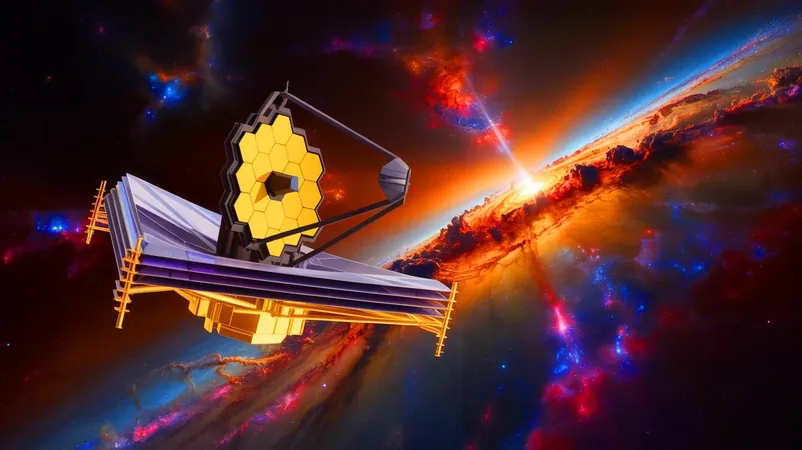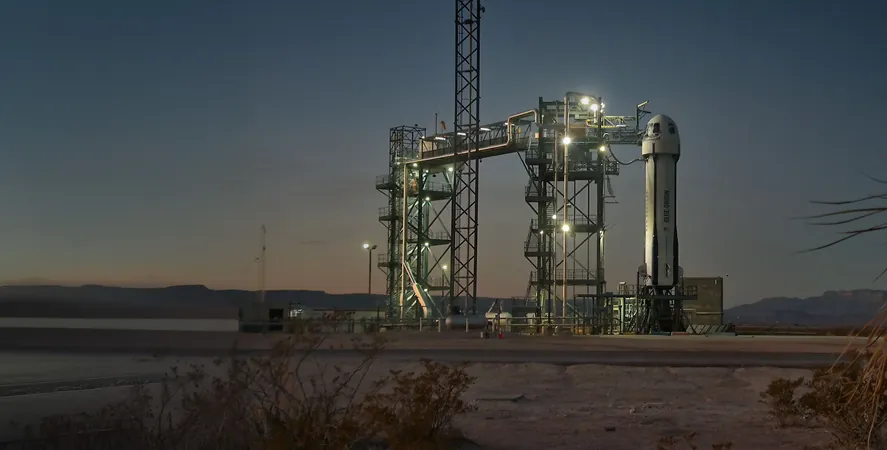
New Cosmic Map Reveals Secrets of the Early Universe
2025-07-08
Author: Chun
Unlocking the Mysteries of the Universe
For centuries, the universe has captivated our imaginations, and the quest to understand its celestial secrets is more urgent than ever. However, the early universe has remained a daunting enigma—until now. The COSMOS-Web project has burst onto the scene, unveiling the most detailed cosmic map ever created, revealing images from a staggering 13.5 billion years ago thanks to the remarkable James Webb Space Telescope (JWST).
A Milestone in Astronomy: The COSMOS-Web Project
The launch of the COSMOS-Web project signifies a groundbreaking moment in astronomy. Utilizing the advanced technology of the JWST, researchers have meticulously charted nearly 800,000 galaxies over an area that spans the size of three full moons as viewed from Earth, capturing almost 98% of cosmic history in a single sweep. This unprecedented achievement was made possible by the telescope's massive 21-foot mirror, which can detect the faintest glimmers of light from the farthest corners of the universe.
Led by a collaboration among UC Santa Barbara and various institutions, this colossal dataset surpasses all previous efforts, drastically enhancing our understanding of the universe's early formative years. The processing of raw images into accessible catalogs has paved the way for new explorations and studies.
Galaxies and Black Holes: A Cosmic Treasure Trove
Among the most exciting revelations of the COSMOS-Web dataset are the previously undiscovered galaxies and supermassive black holes that eluded the Hubble telescope. The JWST's unparalleled sensitivity has allowed astronomers to glimpse fainter and more distant celestial bodies, documenting ten times more galaxies than expected. This groundbreaking discovery raises intriguing questions about our understanding of the cosmos's infancy.
How could such colossal structures form just a few hundred million years after the Big Bang? This data prompts a serious re-evaluation of current cosmological models, pushing researchers to probe deeper into the mechanisms that governed the universe's early evolution.
Empowering Exploration Through Open Access
What sets the COSMOS-Web project apart is its commitment to open access. The dataset is freely available to the public, inviting not only seasoned astronomers but also enthusiasts and students to explore and analyze this treasure trove of information. This democratization of cosmic data is anticipated to spark new discoveries, as diverse interpretations might illuminate hidden cosmic secrets.
As Caitlin Casey from UC Santa Barbara highlights, involving a wider audience fosters innovation and broadens our understanding of complex phenomena like dark matter and the physics of the universe's early stages.
The Future of Cosmic Discovery
As we inch closer to unraveling the enigmas of space, the COSMOS-Web project stands as a beacon for future explorations in astronomy. The data supplied by the JWST is not just a portal into the past; it challenges existing scientific beliefs and sets the stage for groundbreaking discoveries.
The repercussions of this research are vast, opening up new pathways for investigation into the universe’s origins. As astronomers continue to sift through the data, they are bound to unearth even more about the cosmos's intricate history—and the fresh questions raised will undoubtedly send ripples through the scientific community.



 Brasil (PT)
Brasil (PT)
 Canada (EN)
Canada (EN)
 Chile (ES)
Chile (ES)
 Česko (CS)
Česko (CS)
 대한민국 (KO)
대한민국 (KO)
 España (ES)
España (ES)
 France (FR)
France (FR)
 Hong Kong (EN)
Hong Kong (EN)
 Italia (IT)
Italia (IT)
 日本 (JA)
日本 (JA)
 Magyarország (HU)
Magyarország (HU)
 Norge (NO)
Norge (NO)
 Polska (PL)
Polska (PL)
 Schweiz (DE)
Schweiz (DE)
 Singapore (EN)
Singapore (EN)
 Sverige (SV)
Sverige (SV)
 Suomi (FI)
Suomi (FI)
 Türkiye (TR)
Türkiye (TR)
 الإمارات العربية المتحدة (AR)
الإمارات العربية المتحدة (AR)